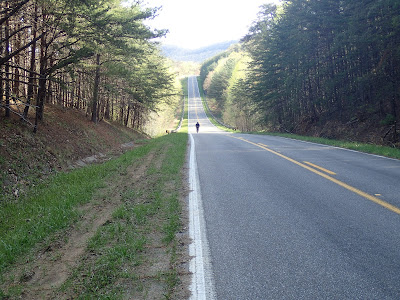- 33% never, ever gonna get on a bike.
- 60% skittish, unlikely cyclists due to issues of safety.
- 7% enthusiastic users of Portland infrastructure.
- .5% "strong and fearless" folks who would ride on the streets whatever the situation
I'm always wary of statistics; they can be massaged and twisted as seen fit, so I don't take them as proof. Yet, these suggest that there is an enormous population, a market share (my words), of potential cyclists out there to be captured if done so correctly. I know of many riders who very passionately stomp their feet that a bicycle is like a car and that a bicycle has the same right to the lane and that bike facilities are not needed! And, yes, I most ways agree, although one has to consider the reality that it is not an equal relationship. 3000lbs vs. 200lbs is not created equally. Still, I'm certainly in that 7.5% of riders and have been commuting in some capacity since 1992 when I rode the 3m from my apartment to school for my post-bac teaching work. I ride without infrastructure and commuted even before I knew there was a term like cycling infrastructure. For cycling to grow, though, developers and city fathers must find a way to hook that 60%, and that way according to this article and study is more infrastructure. Do studies exist from Portland and Minneapolis models that suggest an increase in cycling with the investment in cycling infrastructure? I would assume, yes.
I'm going to re-read the Mionske article, but I'm also going to re-read counter-arguments, like those of John Forester and his "Effective Cycling". Forester's work has been equally influential and it would be fun and enlightening to experience and productive, rigorous and informative debate between the two, not necessarily from a dogmatic standpoint, as it wont to happen. I know a local cycling instructor who is a passionate Forester follower. Another fellow local bike commuter (with whom I sort of commuted yesterday) may not ascribed literally to the Forester model, but he has stated to me that he doesn't see the need for infrastructure.
In considering my European experience, and that was in the south of Europe where urban cycling is not nearly as pervasive as is in the north, I see both viewpoints in action. I saw lots of cyclists in places with infrastructure, i.e. Barcelona, and lots of cyclists with no infrastructure whatsoever, i.e. Rome. The answer may not be the cyclist, but rather the automobile driver. Where there is an inducement to not drive, people walk and ride. Where it is easy to drive, as in the entire U.S. with its cheap supply of low-tax fuel, people drive.

1 comment:
I really wish it were more expensive to drive. It would do all sorts of things for health, for the environment. I understand the concerns that it affects the poor disproportionately (because they often work in exurbs that are currently unreachable via mass transit), but I also think we as a society take the easy way out and rely too heavily on gas.
About a year ago (or maybe it was two), I tried taking the train to work most of the time. Gas was expensive (nearly $4/gallon) and the train fares were such that although the train was still more expensive, it was pretty close to driving, and I knew there were benefits to the train. Well, then the price of gas went way down again, and the train fares went up (and went up again just recently), and it's twice as expensive to take the train. I still do it occasionally, but with free parking at my school, I can't afford to do it daily.
Also, it was noted that small cars sold much better when there were incentives to have a small car -- expensive gas, the cash-for-clunkers deal. Now that gas is cheaper and there's no cash for clunkers, the sale of trucks and other SUVs is up. Go figure.
Post a Comment